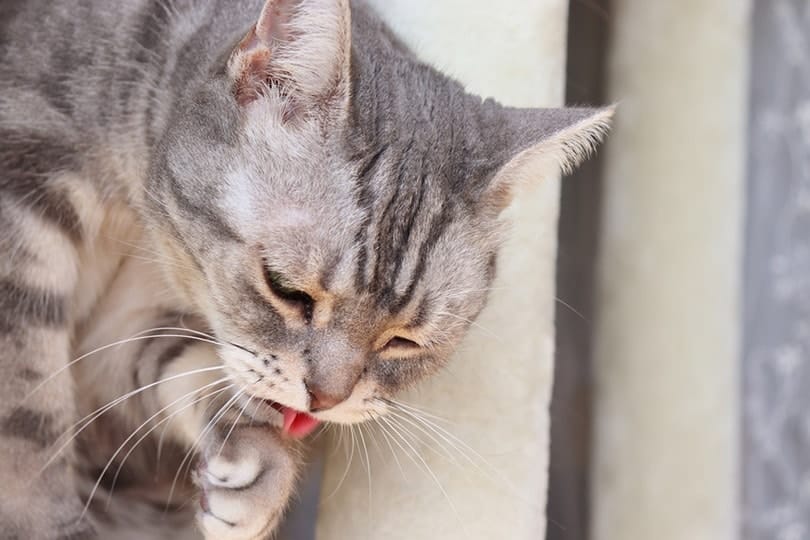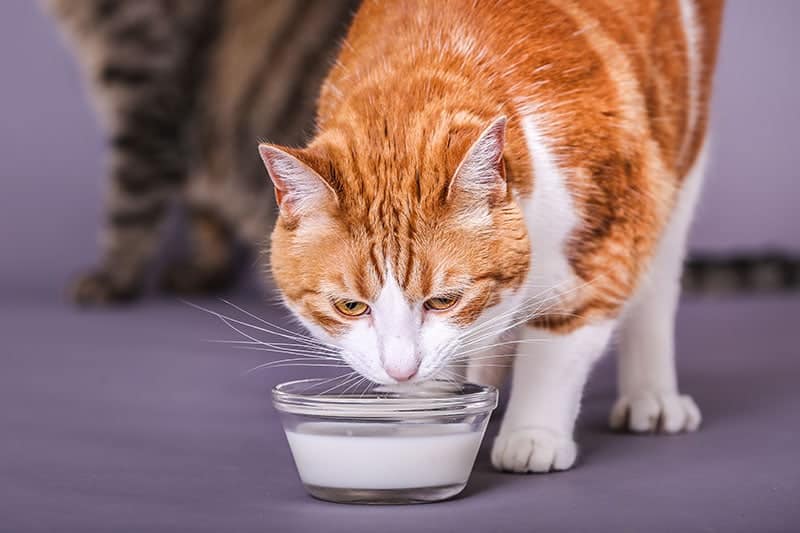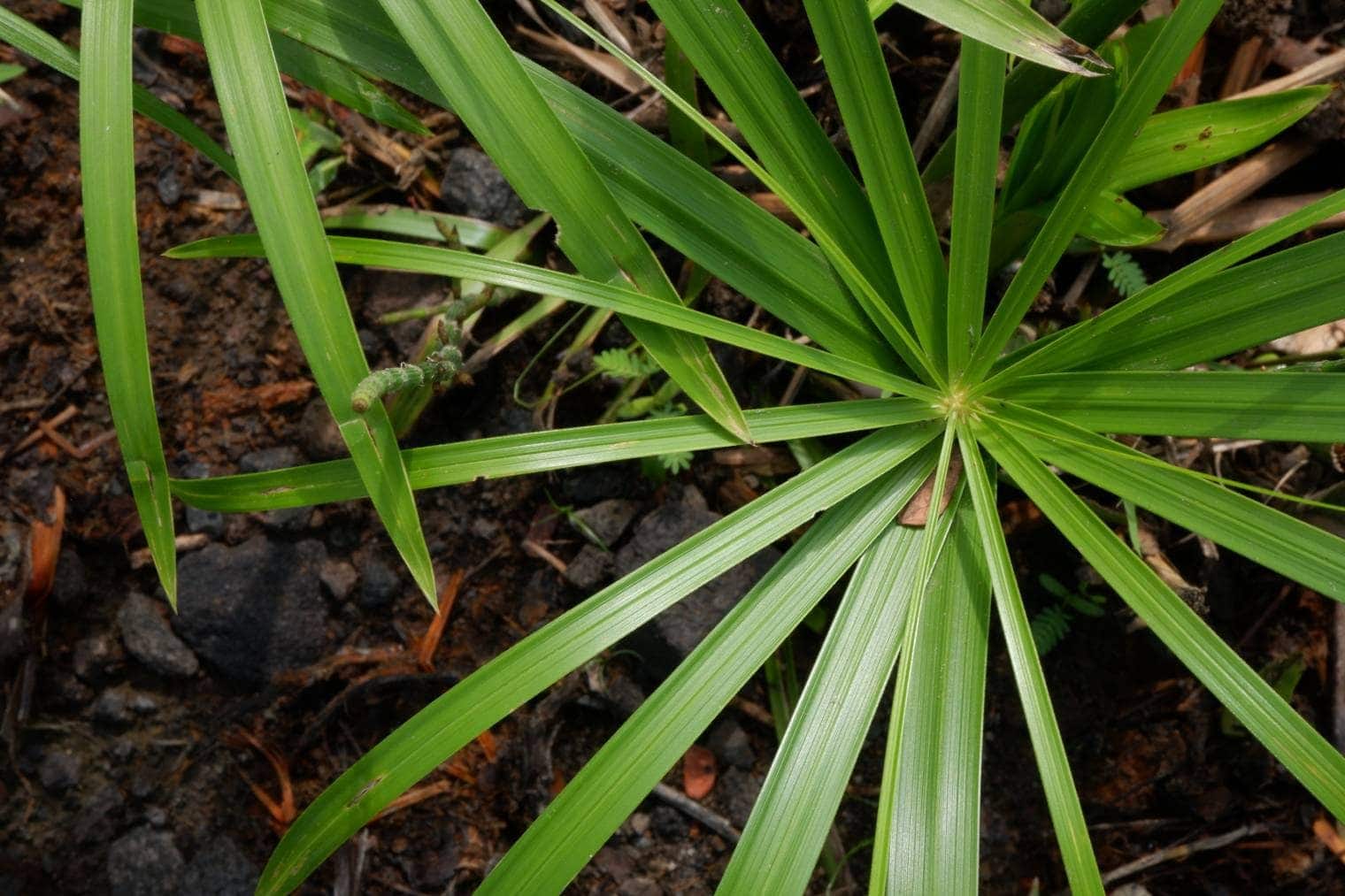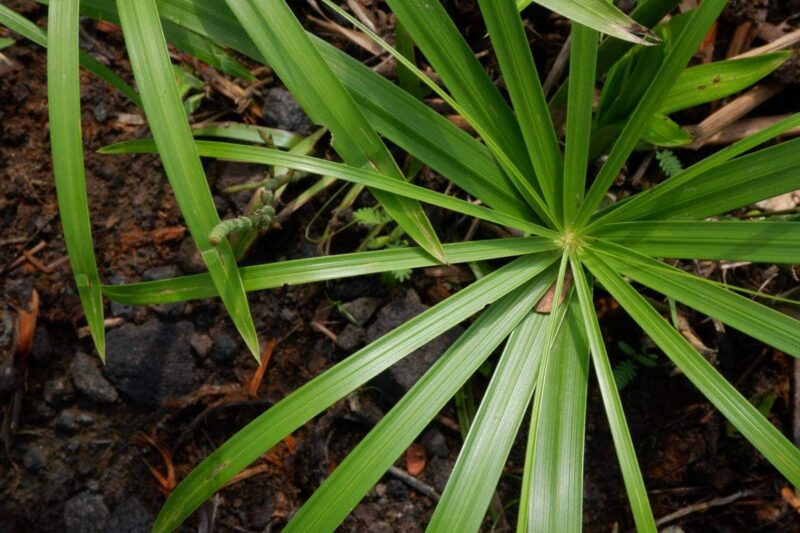Schefflera are popular subtropical plants that are commonly grown indoors. These pretty houseplants feature oval leaves that appear to drop from a central stem. Some people think the leaf configuration resembles an umbrella. Hence this beautiful houseplant’s most common other name: the umbrella plant. But you’ll sometimes hear it referred to as an Australian ivy palm, octopus tree, or Starleaf. Believe it or not, there are actually two types of schefflera plants: Schefflera actinophylla and Schefflera arboricola. The two look very similar, with size being the biggest difference; Schefflera arboricola is the smaller of the two and is sometimes called dwarf schefflera. Both are toxic to cats. Contact your veterinarian if you suspect your kitty has taken a bite of this poisonous plant.
What Are the Signs of Schefflera Poisoning?
When cats get into schefflera, they may drool, gag, and use their paws to swipe their mouths due to the painful burning sensation the plant can cause when it comes into contact with mucous membranes. It may also cause intense inflammation that can make it difficult for your kitty to swallow. It isn’t common for cats that end up getting into schefflera to show obvious signs of pain, such as extreme vocalization, but they may. Symptoms usually manifest straight away due to the mouth pain, and within 2 hours of a cat ingesting any part of the plant, you may see vomiting.
Most toxicities are self-limiting as the plant causes pain when eaten so cats don’t generally eat enough of it to cause more serious problems.
Schefflera contains lower levels of insoluble calcium oxalate crystals than other plants and are not a common cause of severe intoxication.

Is There One Part of the Plant That’s Problematic?
The entire plant is toxic to cats. This includes the leaves, roots, and stems. The calcium oxalate crystals found in the plant are responsible for its toxicity. The compound is present in all members of the Araliaceae family, including Schefflera actinophylla and Schefflera arboricola. While you’re at it, if you have a toddler or a dog, you might want to consider choosing another houseplant, as the insoluble calcium oxalate crystals found in schefflera plants are toxic to dogs and humans as well.

What Should I Do If I Suspect My Kitty Has Gotten into Schefflera?
If you come home to a sick kitty drooling and vocalizing in the middle of a pile of schefflera plant leaves, the very first thing to do is move your cat to a safe location where they don’t have access to any other toxins. Next, attempt to determine how much your cat ate and how long ago they probably munched on the plant.
Contact your vet and make sure to provide critical details such as when your cat consumed the plant and how much it appears your kitty managed to eat. You should be prepared to describe any symptoms your cat might be showing. Details count in these situations, so take a minute to write your answers down if you’re scared or nervous. If you’re unsure which plant your cat got into, it’s best to play it safe. Take a picture and send it to your veterinarian.
Giving your cat a small amount of milk to drink or yogurt to lap can help to bind the crystals and reduce the discomfort.

How Can I Best Prevent Schefflera Poisoning?
The best way to ensure your cat doesn’t end up harmed by schefflera is to remove any plants in the same family from your home. Cats are smart, and it’s almost impossible to convince them not to investigate and play with shiny green things that spark their curiosity. Instead of keeping harmful species in your home, you can select pet-friendly plants like echeveria, tillandsia, and fittonia, that’ll brighten your interior and not cause a problem if your cat takes a bite.

Conclusion
Both varieties of the schefflera plant are toxic to cats. If you suspect your cat has eaten any of this plant, it’s important to contact your vet for advice. If you want to keep plants in your home and you have a cat, it’s important to choose cat-safe plants instead.
Featured Image Credit: Sije18, Shutterstock











